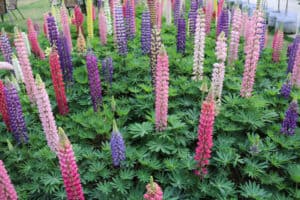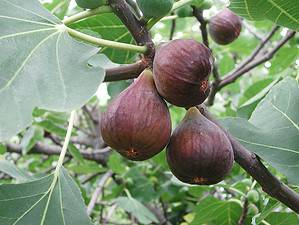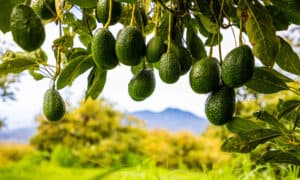Beautiful purple flowering trees can liven up any yard, giving you something colorful to look at daily. There are many options, depending on your location and what you like.
You can plant purple flowering trees for privacy, using them as natural barriers to the outside of your yard. They also offer shade and beautiful, eye-catching sights for you to enjoy. Beautiful purple flowering trees come in many sizes and shapes, so you’ll easily find something to fit your space.
You’ll want to choose a tree that grows in your hardiness zone based on your location. You can view a map if you’re unsure of your zone, allowing you to plant the tree that will grow best in your area.
1. Purple Satin Rose of Sharon
Botanically known as Hibiscus syriacus, this dwarf tree produces purple double flowers. It blooms in midsummer to fall and doesn’t require much maintenance. This tree is technically a shrub, but you can train it to grow into a tree.
Plant it in a full-sun area and make sure the soil is well-drained. Rose of Sharon is drought-tolerant and deer-resistant, so this might be a good option if those are issues for you.
You can also propagate the Rose of Sharon from cuttings. This Hibiscus tree grows best in USDA zones 5-9 and can grow between 8 and 12 feet with a spread of 6-8 feet.
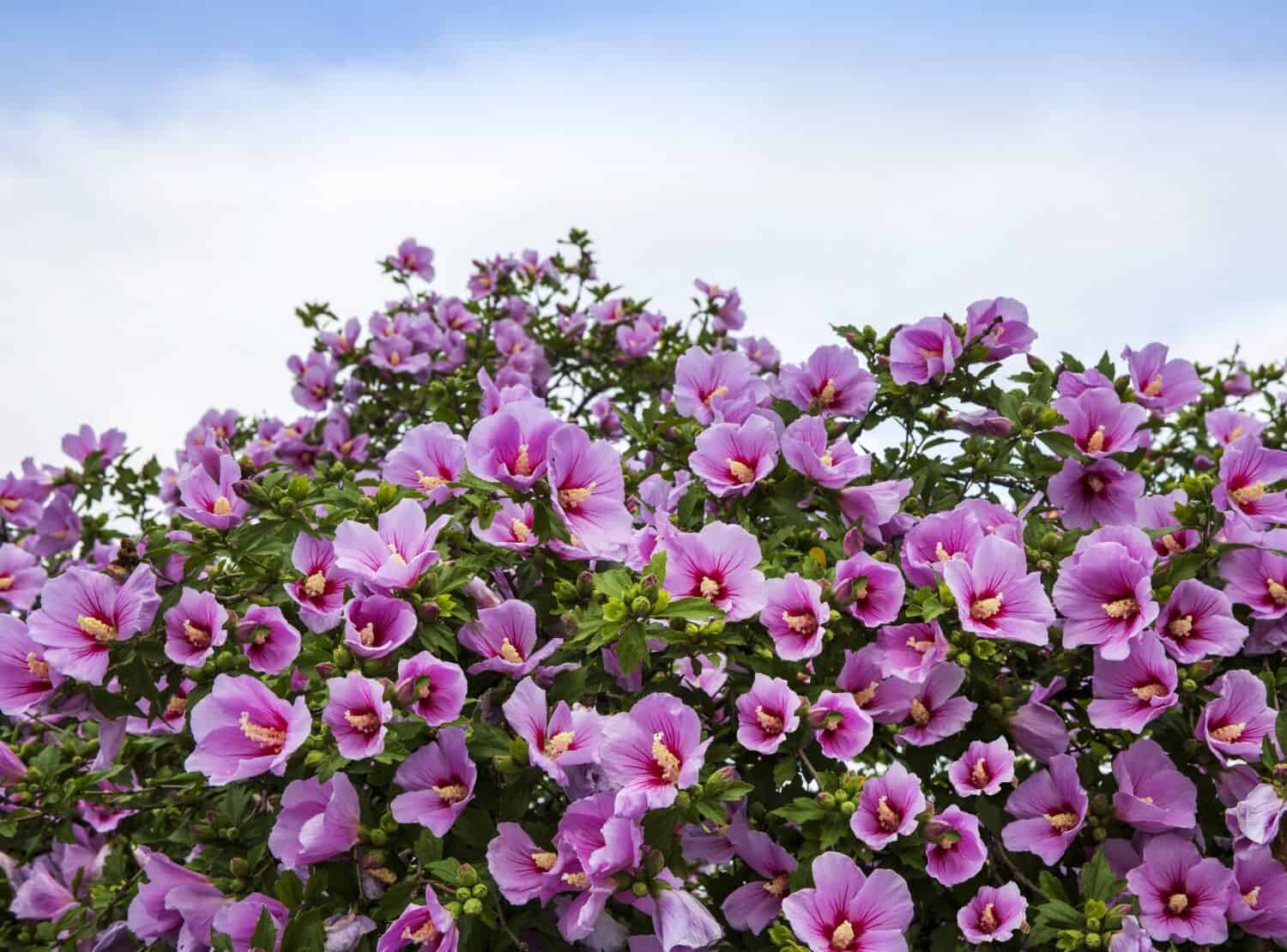
The Rose of Sharon offers a pop of color to brighten your yard.
©Stock for you/Shutterstock.com
2. Eastern Redbud Tree
Also known as Cercis canadensis, the Eastern Redbud tree blooms in the spring. It prefers full sun or partial shade, producing purple flowers that liven up your yard.
You can use any soil type but water them often because it’s drought-intolerant. The tree’s trunk divides closely to the ground, leading to branches splitting early in the growth process. You can get dwarf Eastern Redbud trees, but traditional varieties can grow 20-30 feet high with a spread of 25 feet and grow best in USDA hardiness zones 4-9.
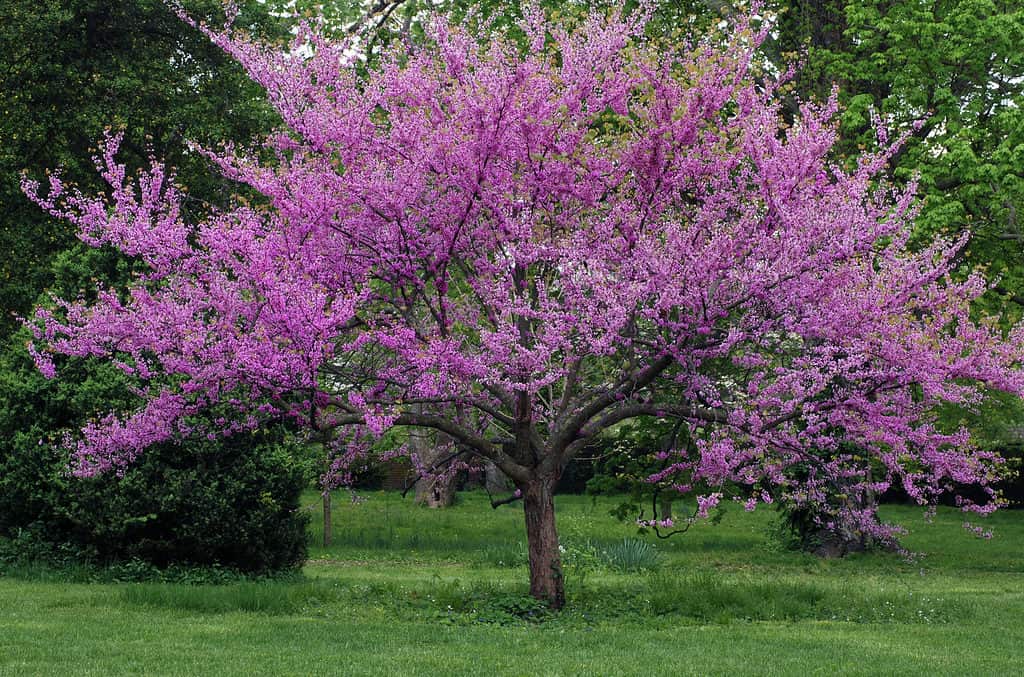
Eastern Redbud trees offer a beautiful sight each time you spend time in your yard.
©Marie C Fields/Shutterstock.com
3. Jacaranda Trees
These trees only grow in hot climates, and while you can start growing them inside, you’ll eventually have to plant them outside. Botanically known as Jacaranda mimosifolia, these trees bloom twice a year, and the trumpet-shaped flowers last a long time. One of the times they bloom is in late spring and then again in the fall.
Jacaranda trees are native to South America and thrive in full sun with well-drained soil. They don’t require much maintenance once they mature, making them an easy addition to your yard. Jacaranda trees grow best in USDA zones 9b-11 and reach 25-50 feet high with a 15-30-foot spread.
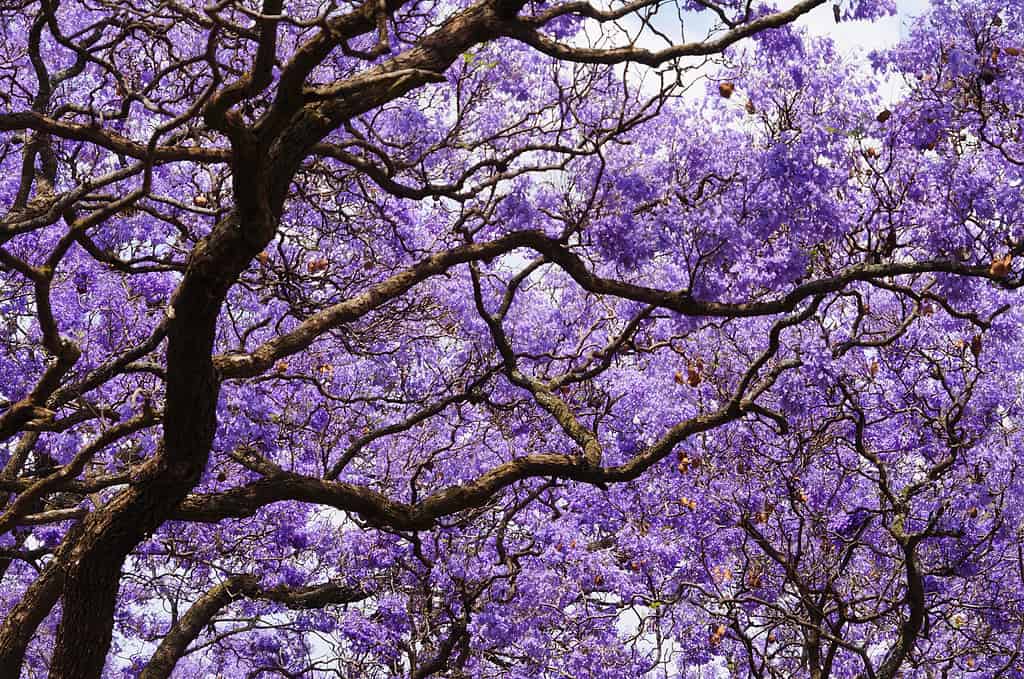
Jacaranda trees provide a beautiful canopy of purple flowers.
©pulpitis/iStock via Getty Images
4. Takasago Flowering Cherry
This purple flowering tree is also known as Prunus sieboldii. It’s native to Japan, Korea, and China and represents nature’s beauty and the transience of life. The tree’s canopy is low, clearing only about two feet above the ground, despite the height of the tree.
The Takasago Flowering Cherry grows best in full sun or part shade and needs fertile but well-drained soil. It’s drought-tolerant and can survive in the city and under power lines. This tree grows in USDA zones 4-8 and can grow to around 20 feet.
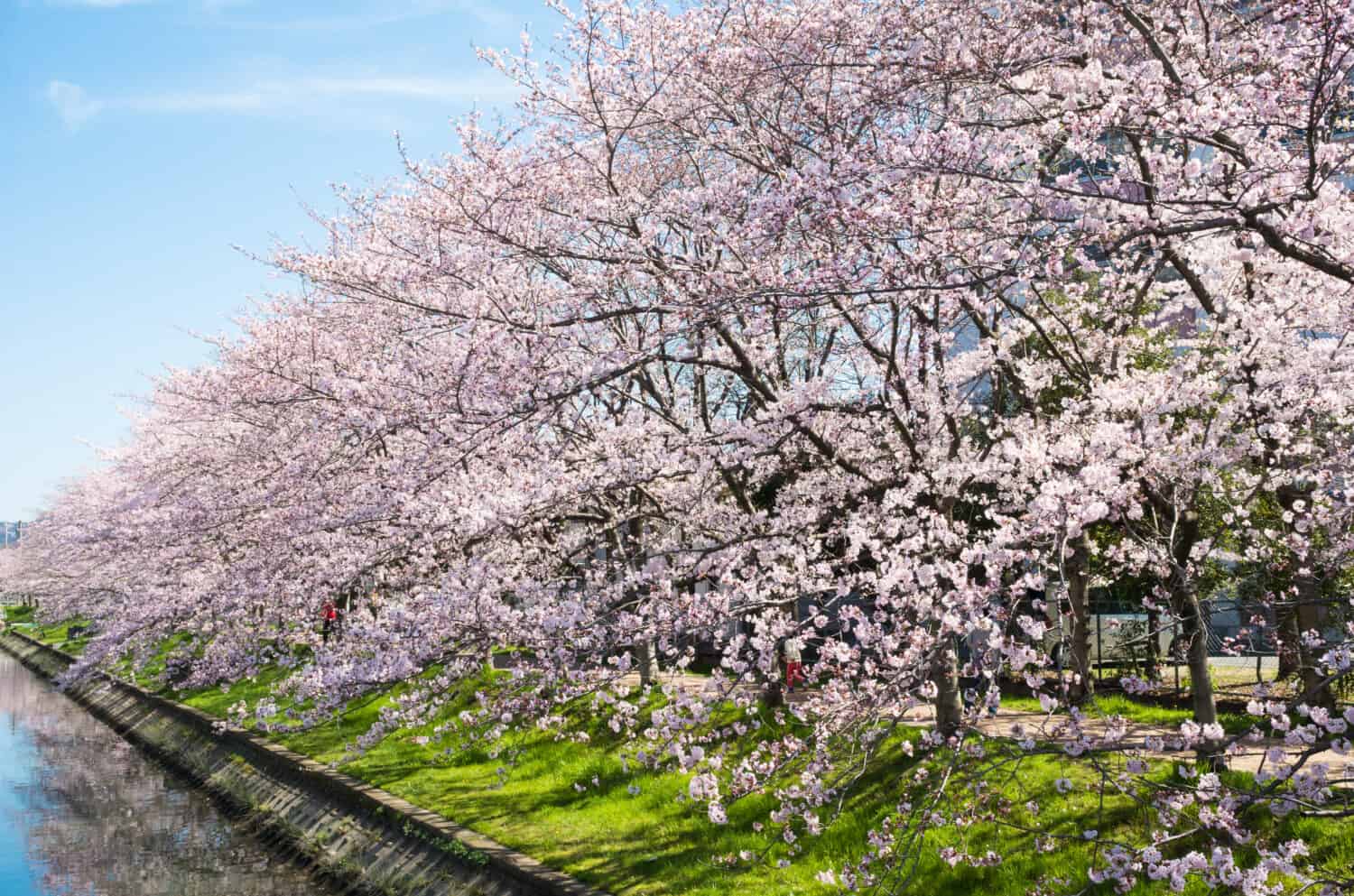
While Takasago Flowering Cherry trees are tall, their branches hang low to the ground.
©utoi/Shutterstock.com
5. Purple Glory Dogwood
Scientifically known as Cornus florida, the Purple Glory Dogwood’s flowers are maroon in the spring and early summer but turn purple the rest of the time. This tree grows best in USDA zones 5-9 and can grow to 15-20 feet with a nearly equal spread. It needs full sun to part shade and constant moderate moisture, so you’ll want to water it often.
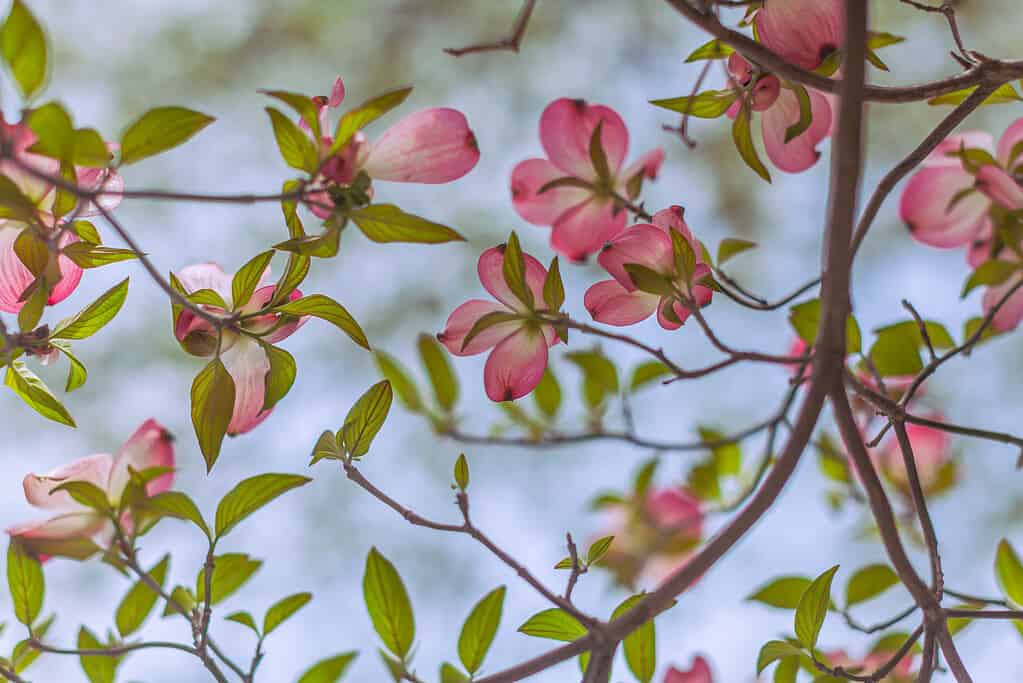
The colorful flowers of a Dogwood tree provide an excellent contrast against the bright green leaves.
©Dmitry Vorobyev/iStock via Getty Images
6. Crape Myrtle Trees
Also known as Lagerstroemia indica, this tree is native to China and Korea. Crape myrtle trees are resilient and beautiful, with crinkled, delicate flowers that often flutter in the breeze. The flowers bloom in late spring or early summer and last throughout the season.
Crape Myrtle grows best in well-drained soil with full sun and is tolerant to heat and droughts once it matures. You may also notice that they attract hummingbirds. It thrives in USDA zones 6-9 and grows between 10 and 30 feet with a spread of 6-15 feet.
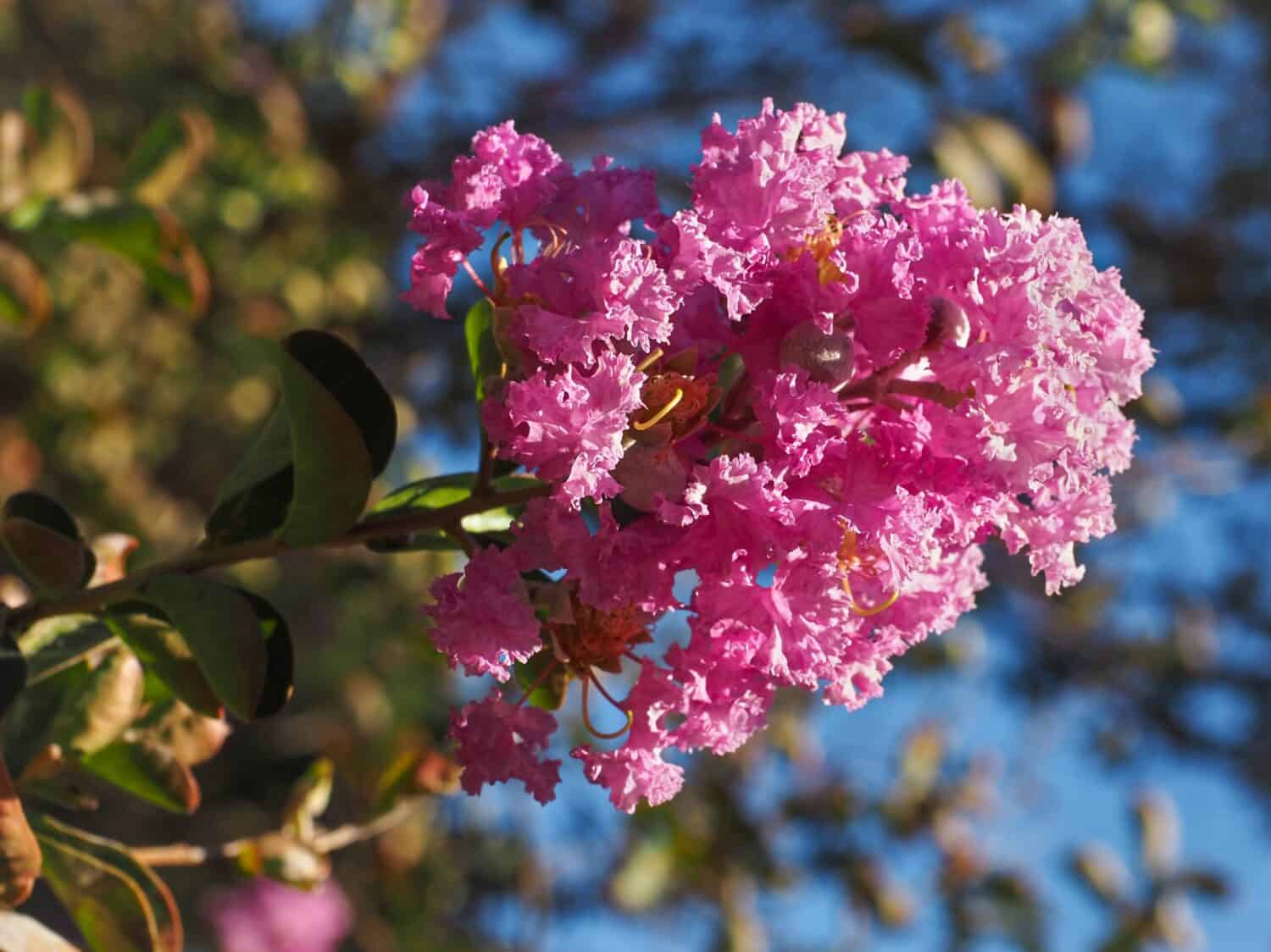
The flowers on a Crape Myrtle are delicate and crinkly, much like Crepe paper.
©LifeCollectionPhotography/Shutterstock.com
7. Dwarf Korean Lilac
This plant is scientifically called Syringa meyeri ‘palibin’ and grows smaller than other lilac trees. In late spring, you’ll notice violet flowers. Plant it in full sun, but the soil can be either moist or dry because it’s a hardy plant.
You’ll only want to plant a Dwarf Korean Lilac in your yard if you live in growing zones 3-7. It grows to about 7 feet tall and 4 feet wide.
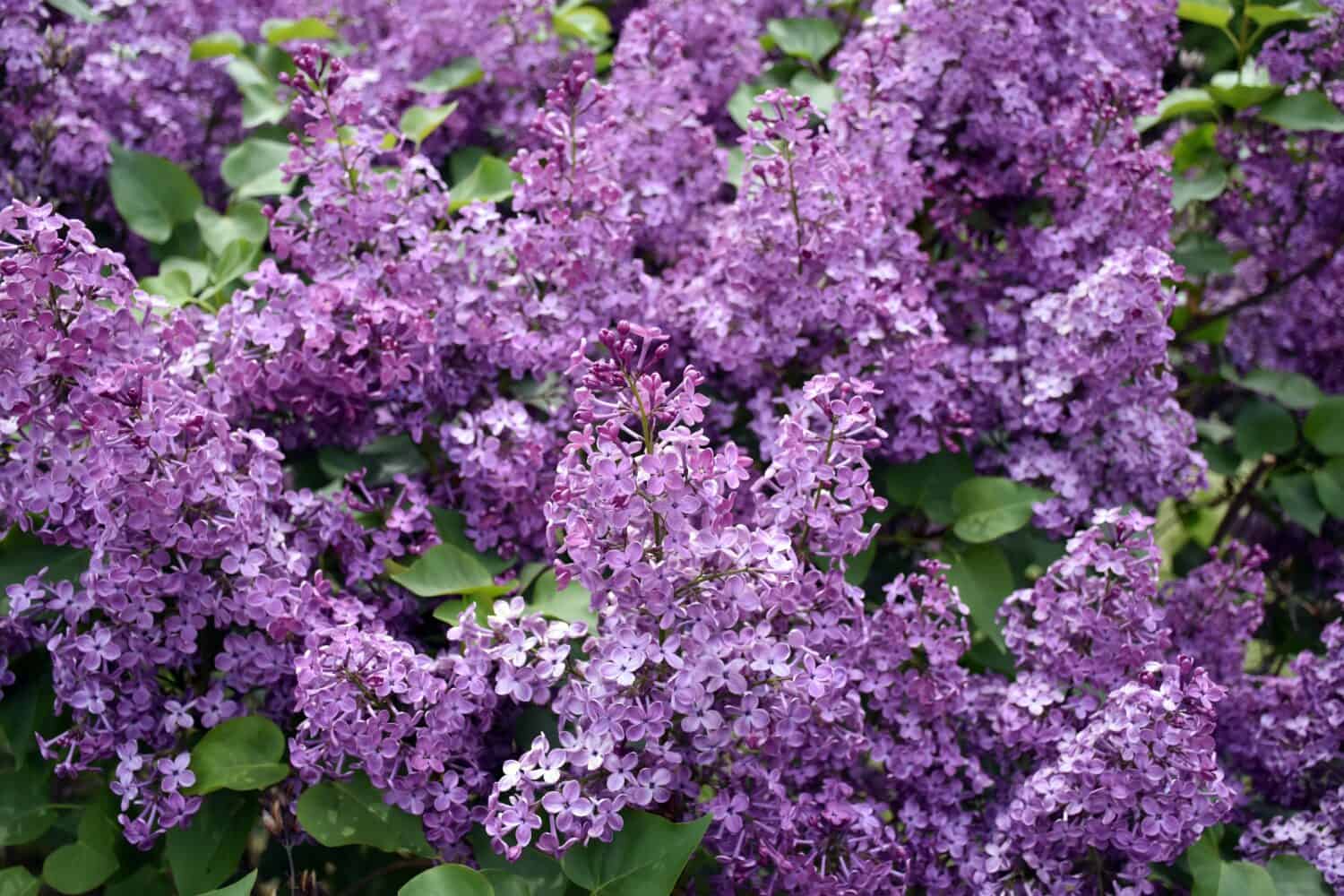
The Dwarf Korean Lilac produces beautiful violet flowers in late spring.
©Joanne Dale/Shutterstock.com
8. Royal Purple Smoke Tree
The royal purple smoke tree is botanically known as Cotinus coggygria and will bring a unique sight to your yard. In spring, this tree is purplish-red but turns plum-purple during summer and keeps this color into autumn.
The Royal Purple Smoke tree boasts blooms that look like smoke and are pink and red throughout the summer. It’s a low-maintenance option that can go in any soil and prefers full sunlight. Once matured, it’s drought-tolerant, adding to its low-maintenance feature.
The Royal Purple Smoke Tree thrives in growing zones 5b-8b. It grows to a height and a spread of 11-15 feet.
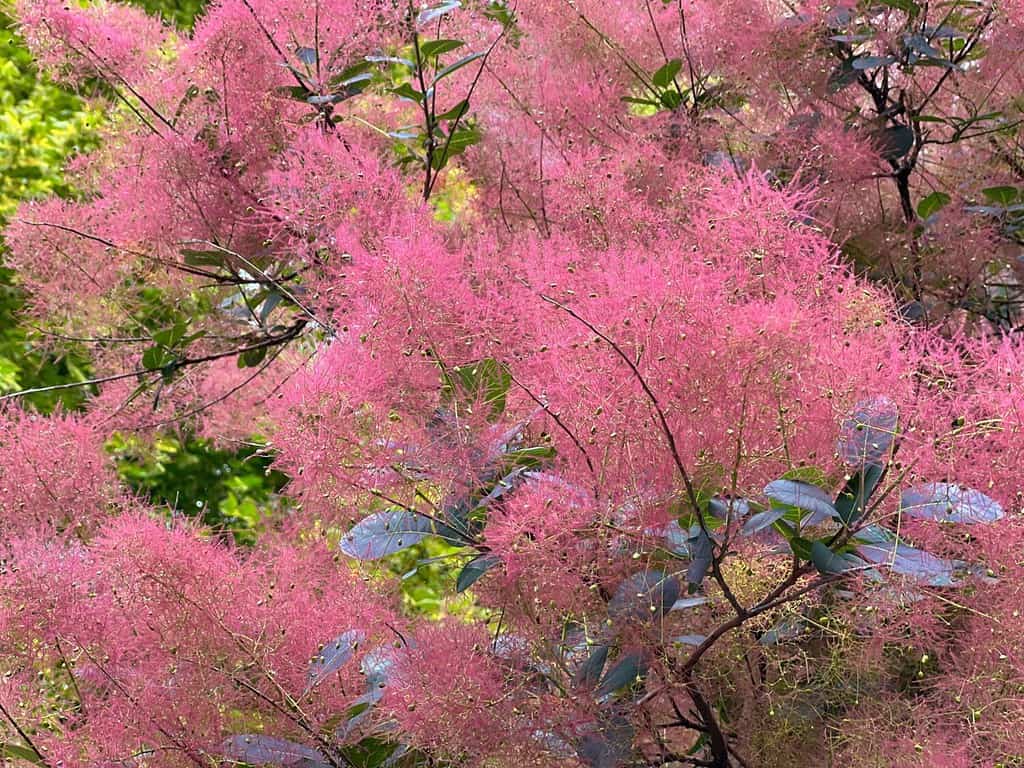
The Royal Purple Smoke Tree offers a unique sight to add to your yard.
©lialina/Shutterstock.com
9. Purple Leaf Plum
Scientifically known as Prunus cerasifera ‘Krauter vesuvius’, the Purple Leaf Plum has dark reddish-purple leaves year-round. If you have lots of green in your yard, this tree will be the perfect contrast to add color. In the spring, they boast white or pink blossoms that add a beautiful pop of color.
Plant them in a space with full to partial shade, but be mindful that choosing full shade leads to the leaves being more green than purple. You’ll want to water them weekly until they mature, and then they become drought-tolerant and won’t need watering often.
Purple Leaf Plum trees should only be planted in USDA zones 5a-8b. They grow to a height of 15-30 feet and a width of 15-25 feet.
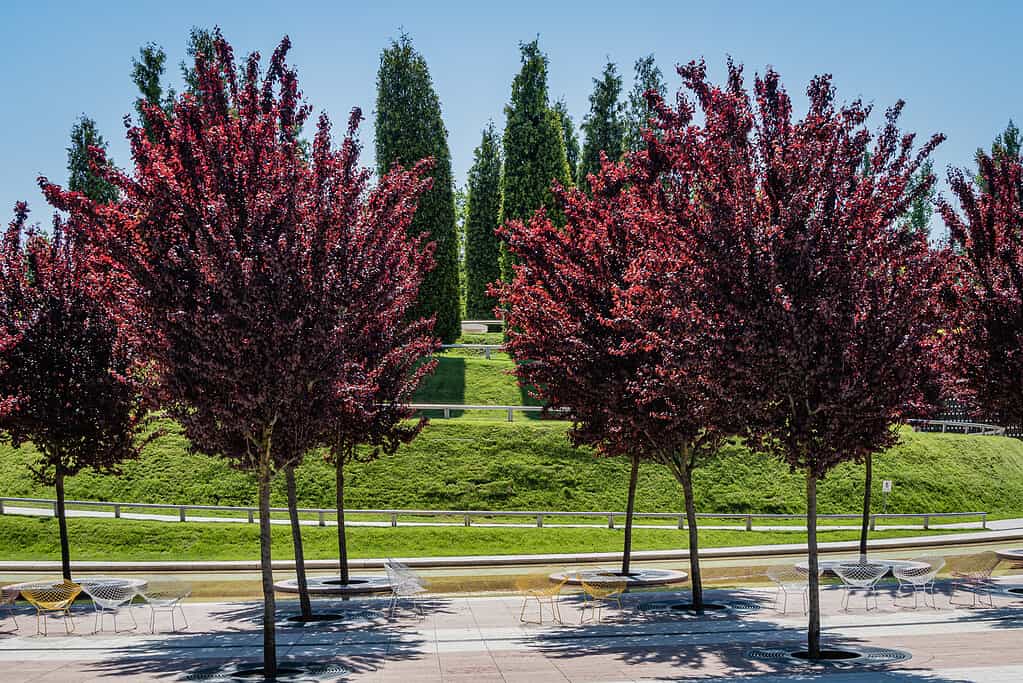
Purple Leaf Plum trees create contrast against greenery and can thrive almost anywhere in your yard.
©Alexander Denisenko/iStock via Getty Images
10. Mountain Laurel Trees
This tree is also known as Kalmia latifolia and is native to Texas. It’s tolerant to droughts and grows best in rocky limestone soil. The smell from mountain laurel trees is often compared to artificial grapes.
The flowers on this tree vary from red, pink, and white, streaked with purple in late spring and early summer. They’ll thrive in any conditions, including deep shade and full sun, but do best in partial shade. Mountain Laurel Trees grow best in USDA zones 4a-9b and can be anywhere from 4-15 feet tall with a width of 4-8 feet.
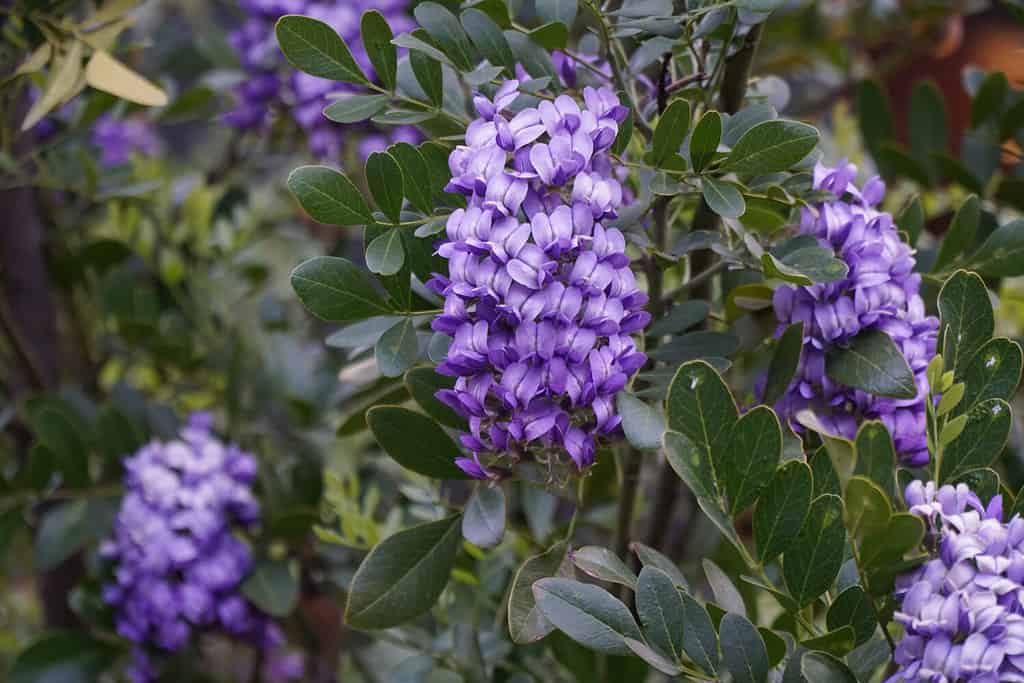
You can plant Mountain Laurel trees for a pop of color in shaded areas.
©Harry Thomas Flower/Shutterstock.com
11. Desert Willow
Contrary to what the name of this tree may lead you to believe, it isn’t a willow tree. Botanically known as Chilopsis linearis, this tree is related to catalpa trees and trumpet vines. It is native to northern Mexico and West Texas and is a desert tree that doesn’t need tons of water to thrive.
When in bloom, Desert Willows attract hummingbirds. They are drought-tolerant and prefer full sun with well-drained soil. You can also grow them in a container, but you’ll have to water them more often.
Desert Willow trees grow in USDA zones 7b-11. They can grow to 15 to 40 feet tall, depending on the location, and spread to 15-25 feet.
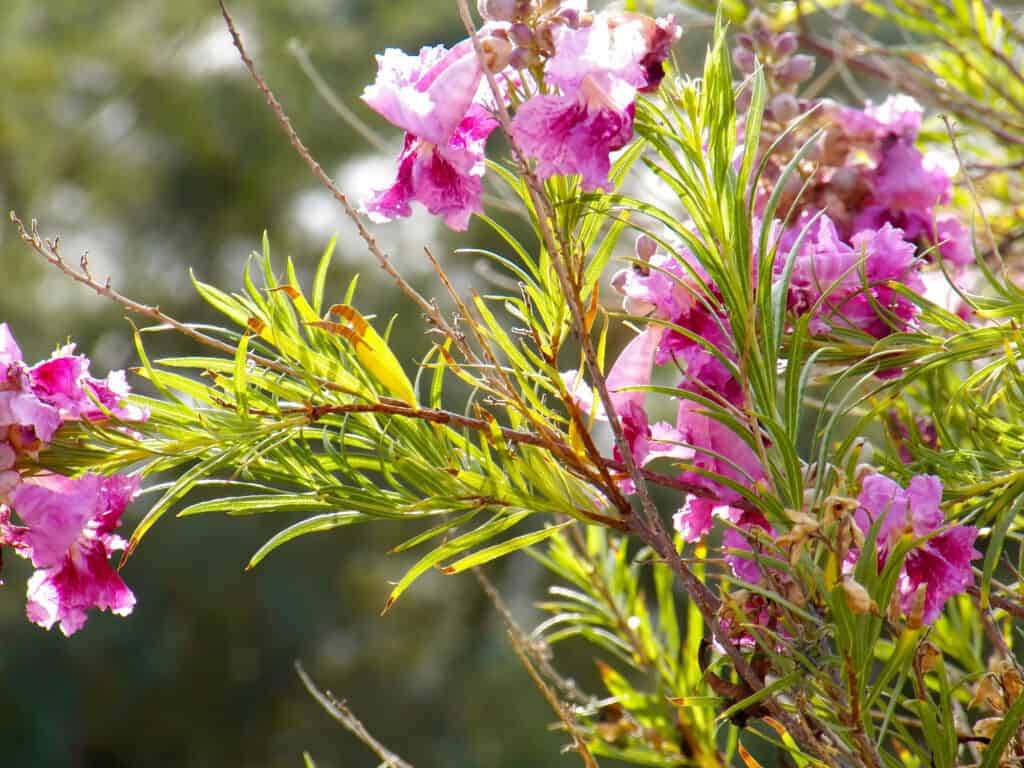
The flowers on a Desert Willow offer a stunning pop of color.
©iStock.com/Yolanda P
12. Purple Orchid Tree
This tropical tree is known as Bauhinia purpurea and is native to Southeast Asia. It produces orchid-like clusters of flowers that offer a nice pop of color for your yard. This tree is sometimes called a butterfly tree because the flowers look a little like butterflies.
A purple orchid tree will thrive in various soil types and environmental conditions, but you should aim for full sun and well-drained soil. It is drought and heat-tolerant and should be fertilized yearly in the spring. You can also get positive results from growing it inside your home.
Purple Orchid trees grow in USDA hardiness zones 9b-11. It reaches 25-30 feet tall with a spread of 25-35 feet.
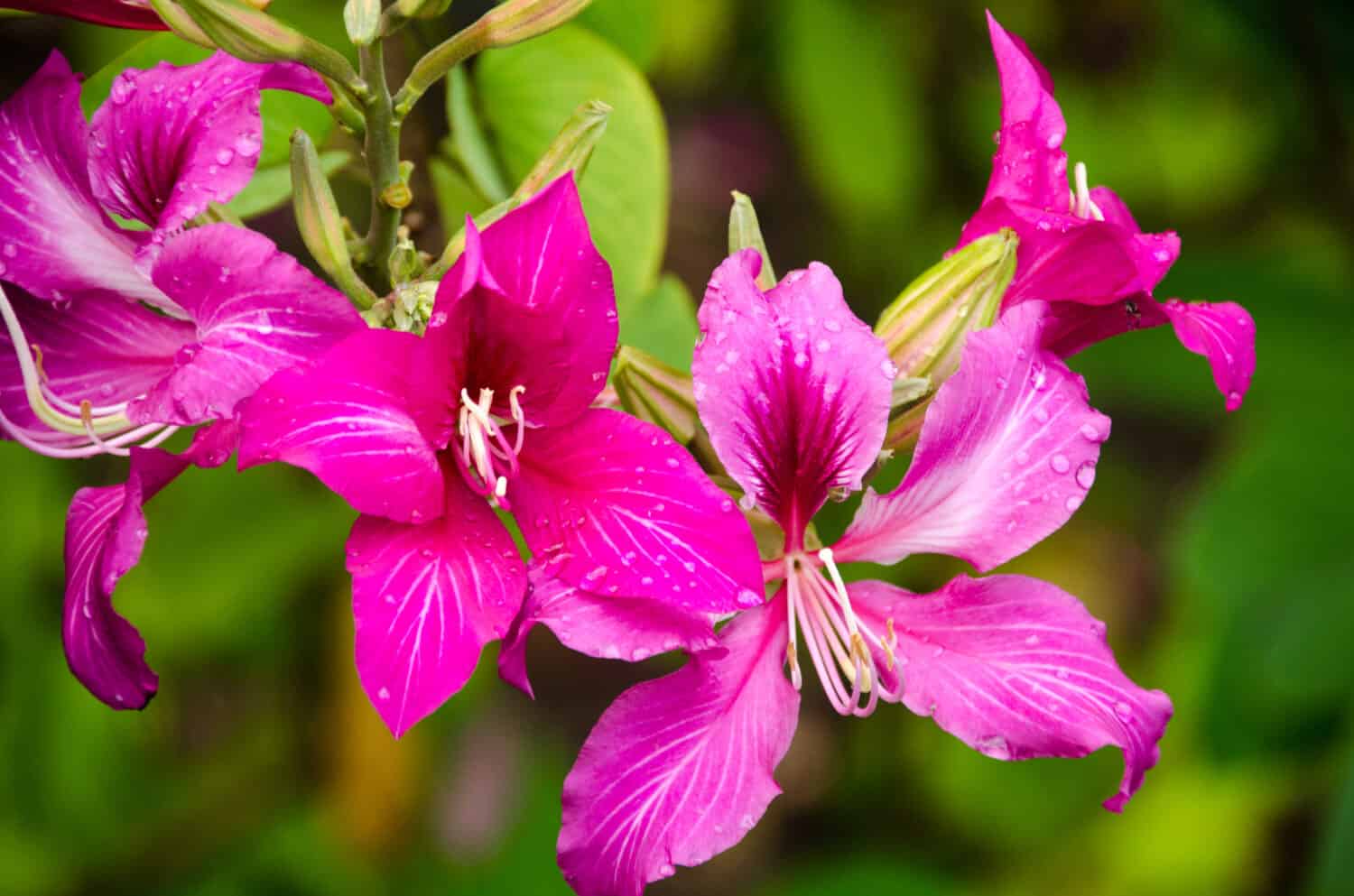
Purple Orchid trees attract wildlife, including pollinators.
©konjaunt/Shutterstock.com
13. Royal Empress Tree
Botanically known as Paulownia tomentosa, this tree is native to Eastern Asia and typically grows quickly. Its flowers smell like vanilla and appear in light pink or purple clusters.
You can use various soil types, and the tree will produce a canopy of thick, dense leaves and flowers. Check your local restrictions for plants because some areas don’t recommend this tree due to its rapid growth.
The Royal Empress Tree thrives in USDA zones 5-9 and can reach 30-70 feet tall. Their spread is usually around 3-5 feet at maturity, and you should plant it in full sun or partial shade.
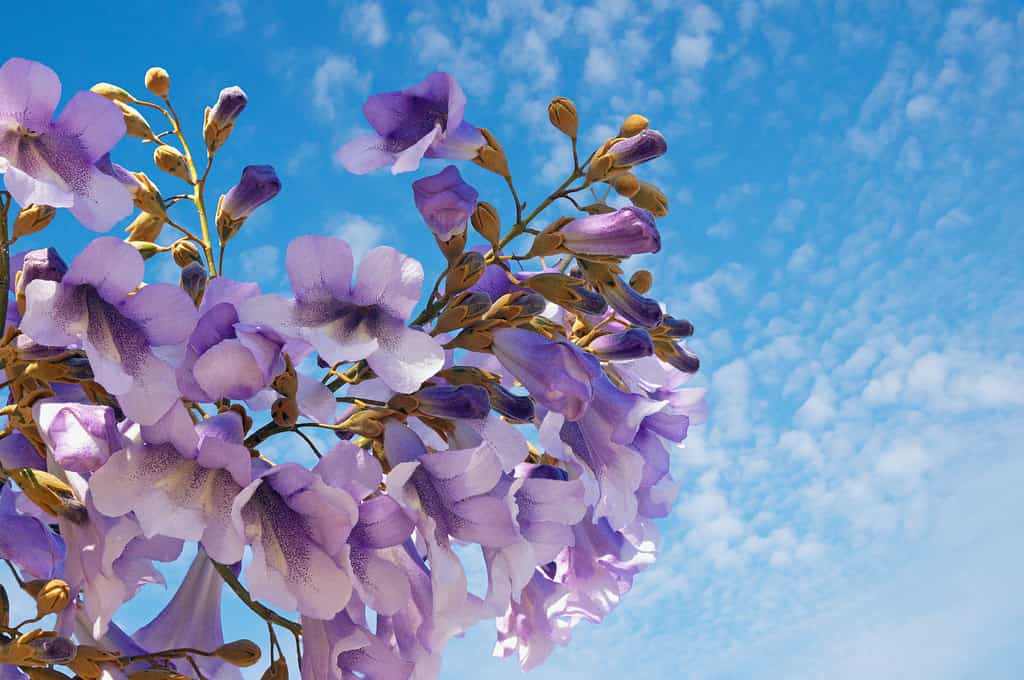
The unique purple flowers on a Royal Empress Tree will provide a comforting scent while adding color to your space.
©Olga Gont/iStock via Getty Images
14. Purple Robe Locust
These trees are ideal for wildlife because they grow so tall and allow undisrupted space. Purple Robe Locust is also called Robinia pseudoacacia. It blooms with clusters of flowers that attract bees and butterflies and offers a beautiful view in your yard.
Purple robe locust grows fast, easily propagates, and should be planted in full sun with well-drained soil. They have nitrogen-fixing and erosion-control properties but require regular attention if you don’t want them to take over your yard and garden.
The purple flowers are edible, so you can enjoy them fresh or cook them. It’s important to note that their leaves and bark are toxic, however. These trees also have sharp thorns you’ll want to look out for.
Purple Robe Locust trees grow best in USDA zones 4a-8b. They can grow to 30-50 feet high with a spread of 20-35 feet.
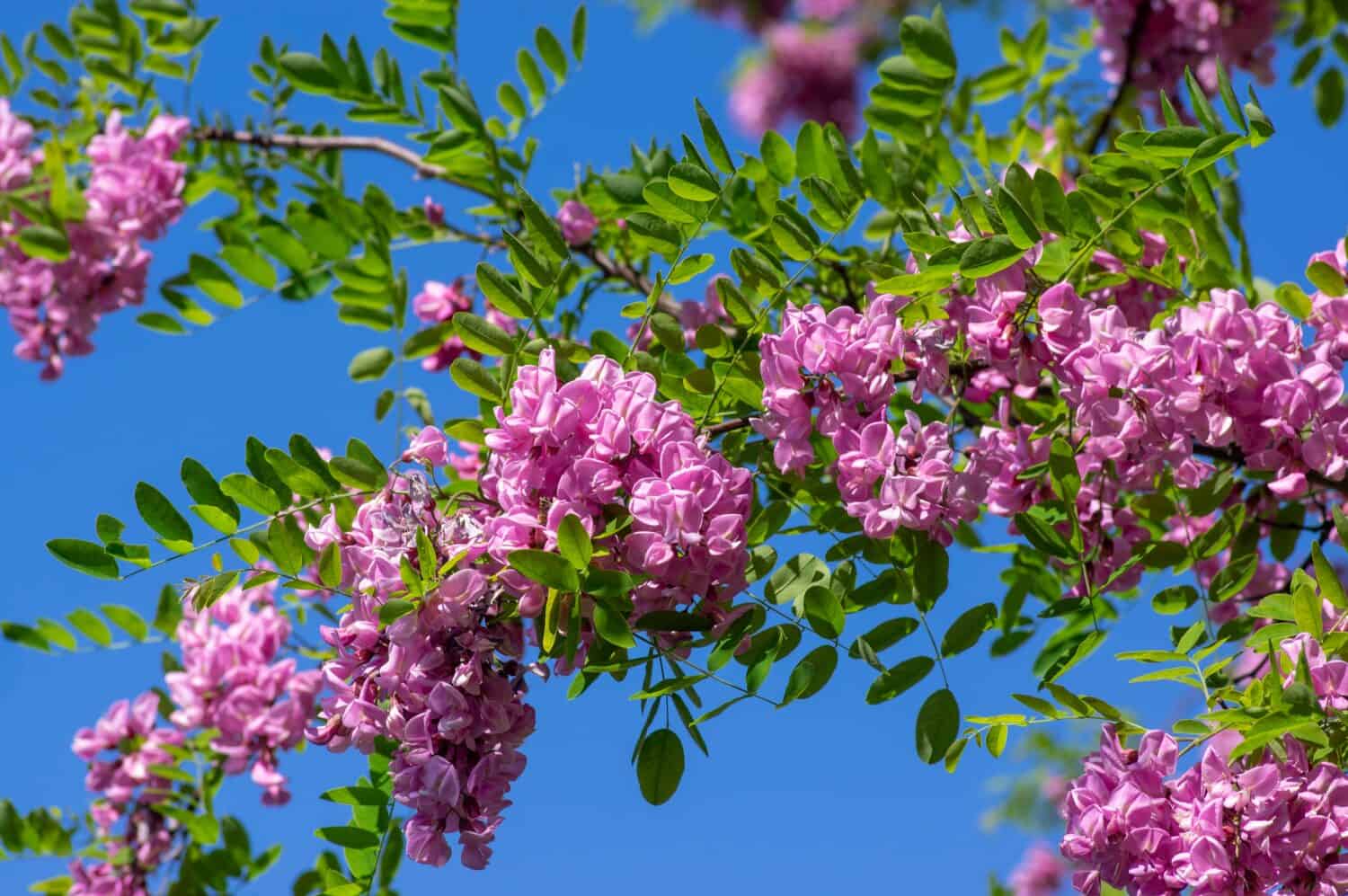
Purple Robe Locust blooms in mid-to-late spring.
©Iva Vagnerova/Shutterstock.com
15. Eastern Wahoo
Scientifically known as Euonymus atropurpureus, this tree is native to Michigan and boasts pinkish-purple flowers. It produces fruit and seeds that birds love as a food source.
This tree prefers damp but well-drained soil and full sun to part shade. The Eastern Wahoo can reach 12-25 feet, making it small compared to many others. It spreads to a width of 15-25 feet and requires USDA zones 3a-8b.
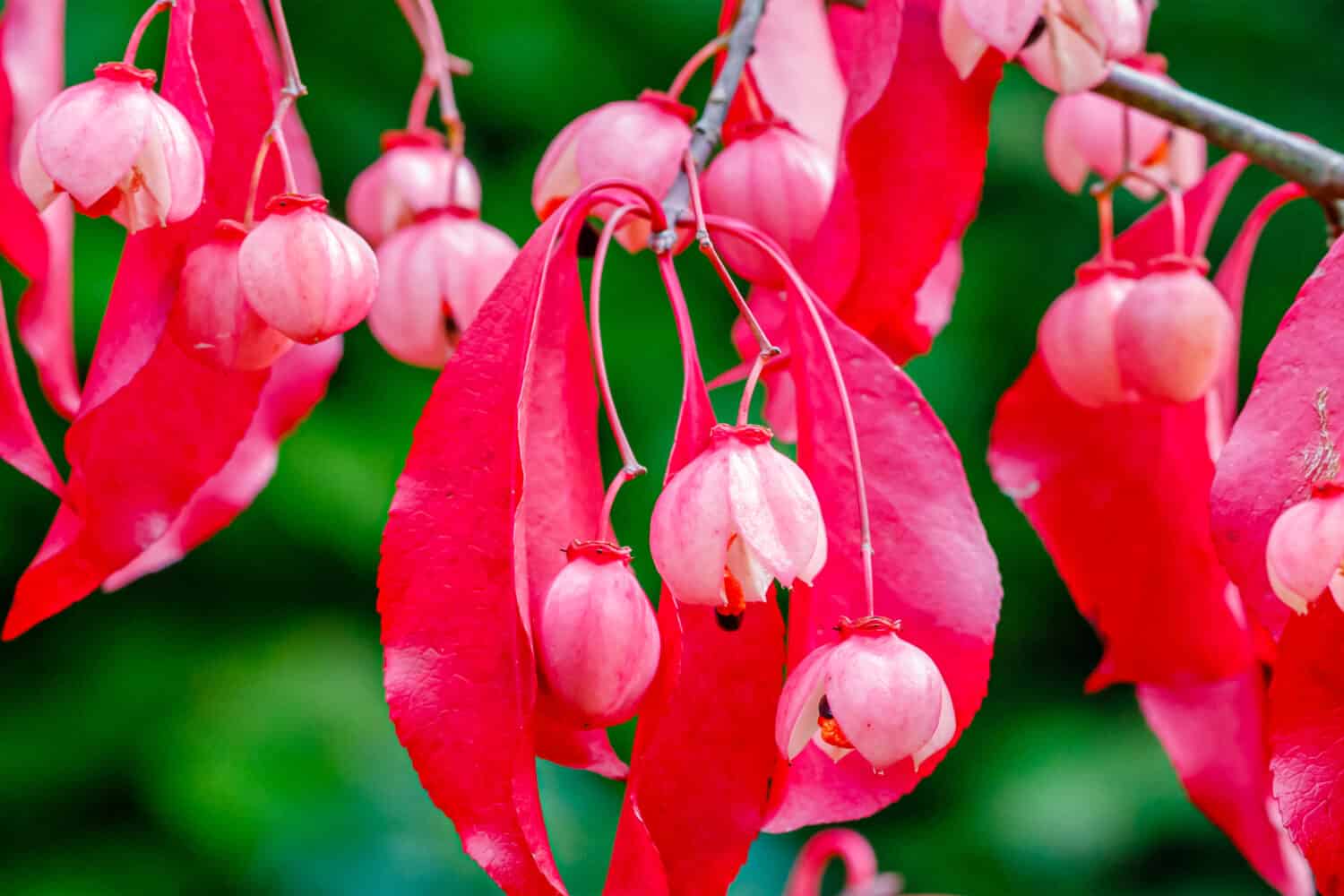
The Eastern Wahoo produces fruit for birds and adds a colorful sight to your yard.
©nnattalli/Shutterstock.com
16. Silk Floss Tree
This deciduous tree is also called Ceiba speciosa and is native to South America. It has an umbrella-like canopy from the way the branches split and grow. Choose a space with well-drained soil and full sun for the best growth.
The silk floss tree also has sharp prickles to deter wild animals, so you’ll want to consider this before putting it in your yard. If you have pets or children, you’ll want to implement safety measures to protect them from getting poked.
Silk floss trees require growing zones 9b-11 for the best results. They grow to between 35-50 feet in height and 40-55 feet spread.
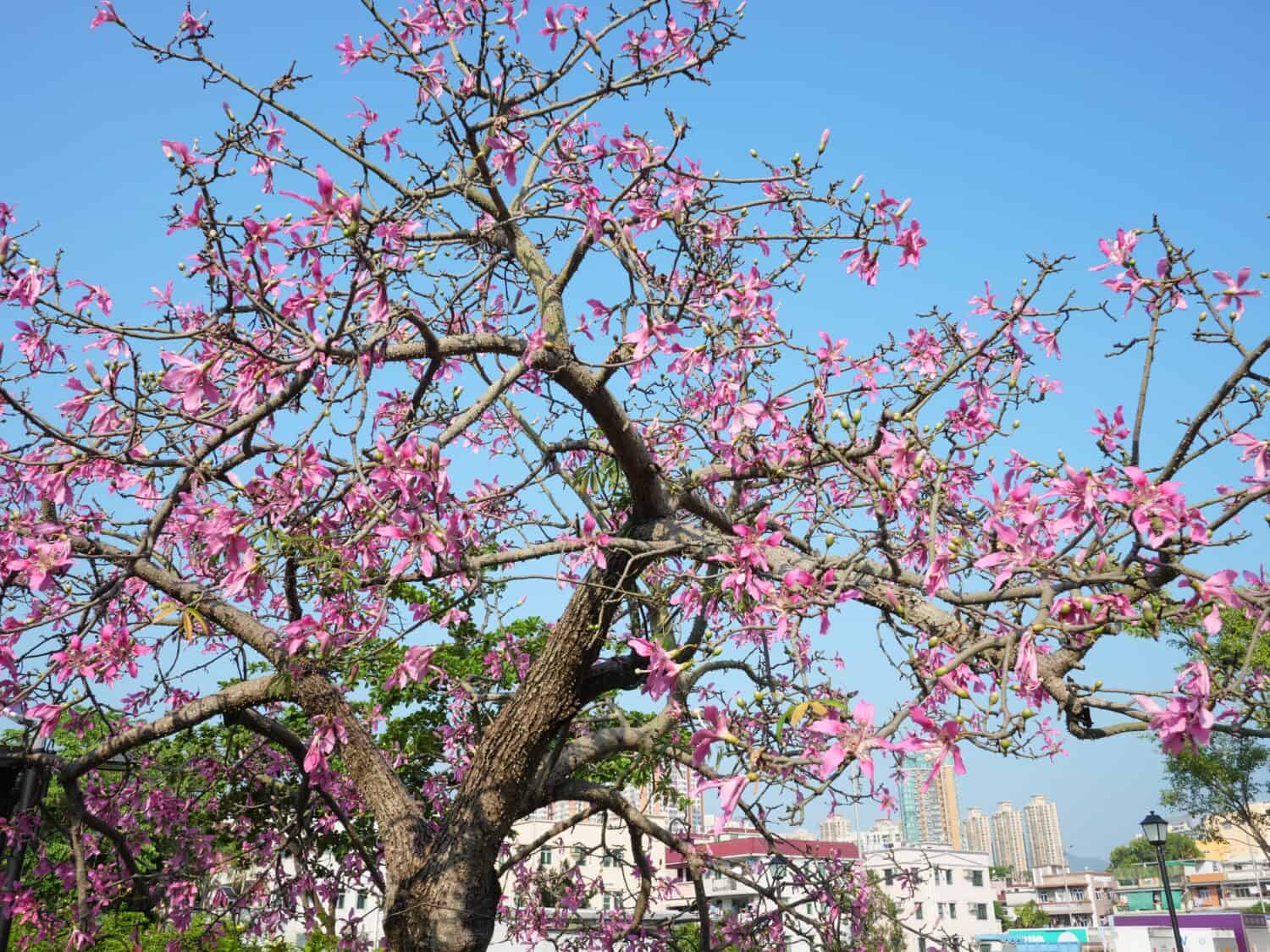
This unique tree will create a unique sight in your yard while adding color and contrast.
©Freeguy/Shutterstock.com
17. Fragrant Lilac
Also known as Syringa vulgaris, this tree blooms with dark purple flower clusters with a fragrant scent. It’s a good option as a hedge or shrub, so you can use it as a natural barrier in your yard. Plus, the clusters of flowers are perfect for cut flower arrangements.
A lilac tree prefers full sun to part shade and well-drained soil. You’ll also want to fertilize the soil in early spring each year. It attracts butterflies in the spring, and the tree’s leaves are good food for caterpillars.
You can choose this Common Lilac if you live in USDA zones 3-7. It grows to between 8-15 feet high and 6-12 feet wide.
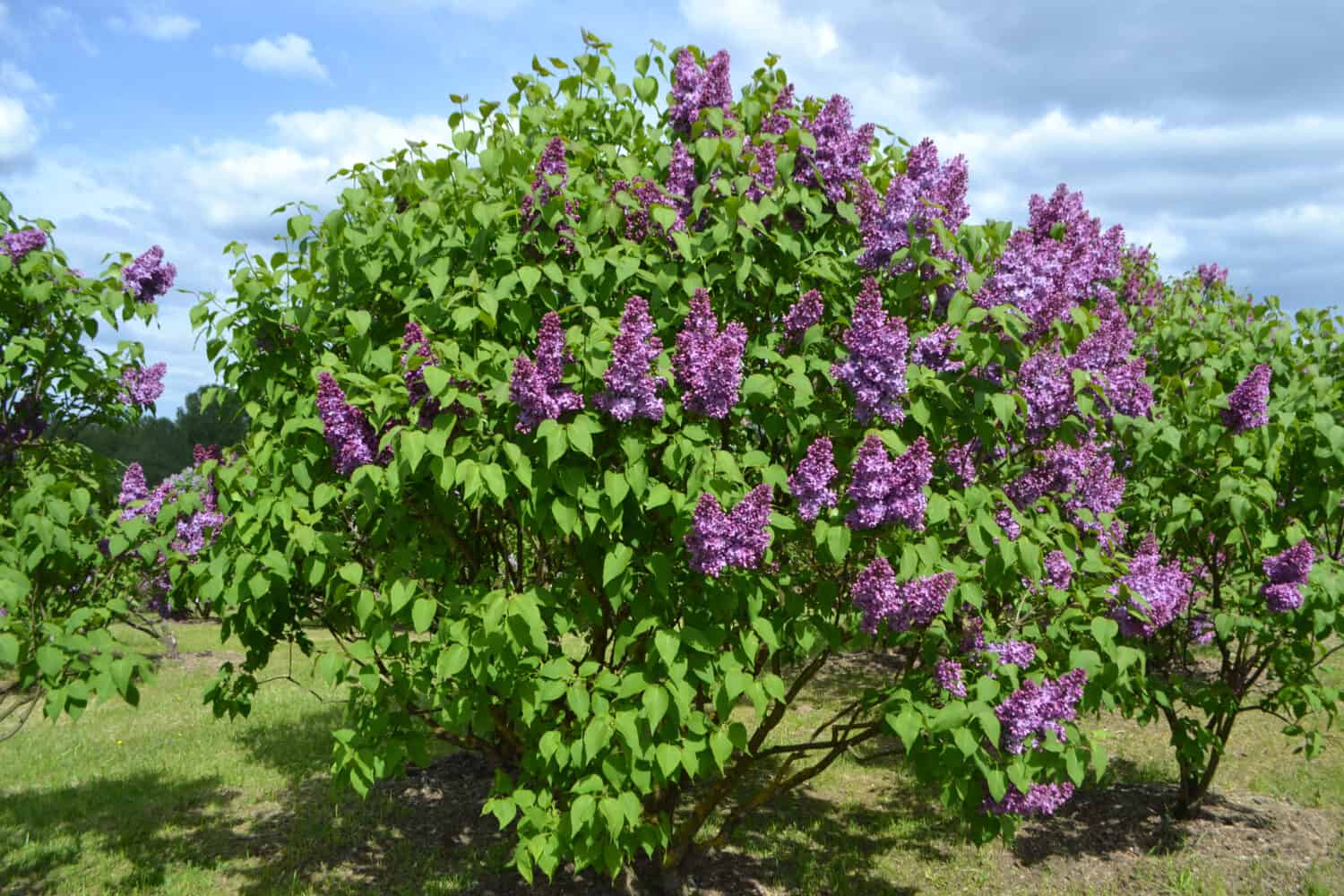
The Fragrant Lilac adds color and will make your yard smell good.
©Edita Medeina/Shutterstock.com
18. Purple Wisteria Tree
Scientifically known as Wisteria Sinensis, this tree produces clusters of bluish/purple blooms that look like they’re dripping from a vine. They are tolerant to drought, deer-resistant, and resistant to disease. You’ll likely notice hummingbirds and butterflies on and around it when the flowers bloom.
If you plant a Wisteria tree, ensure you’re in USDA zones 5a-8b. The tree can reach heights of 10-25 feet with a 4–30-foot spread and prefers full sun .
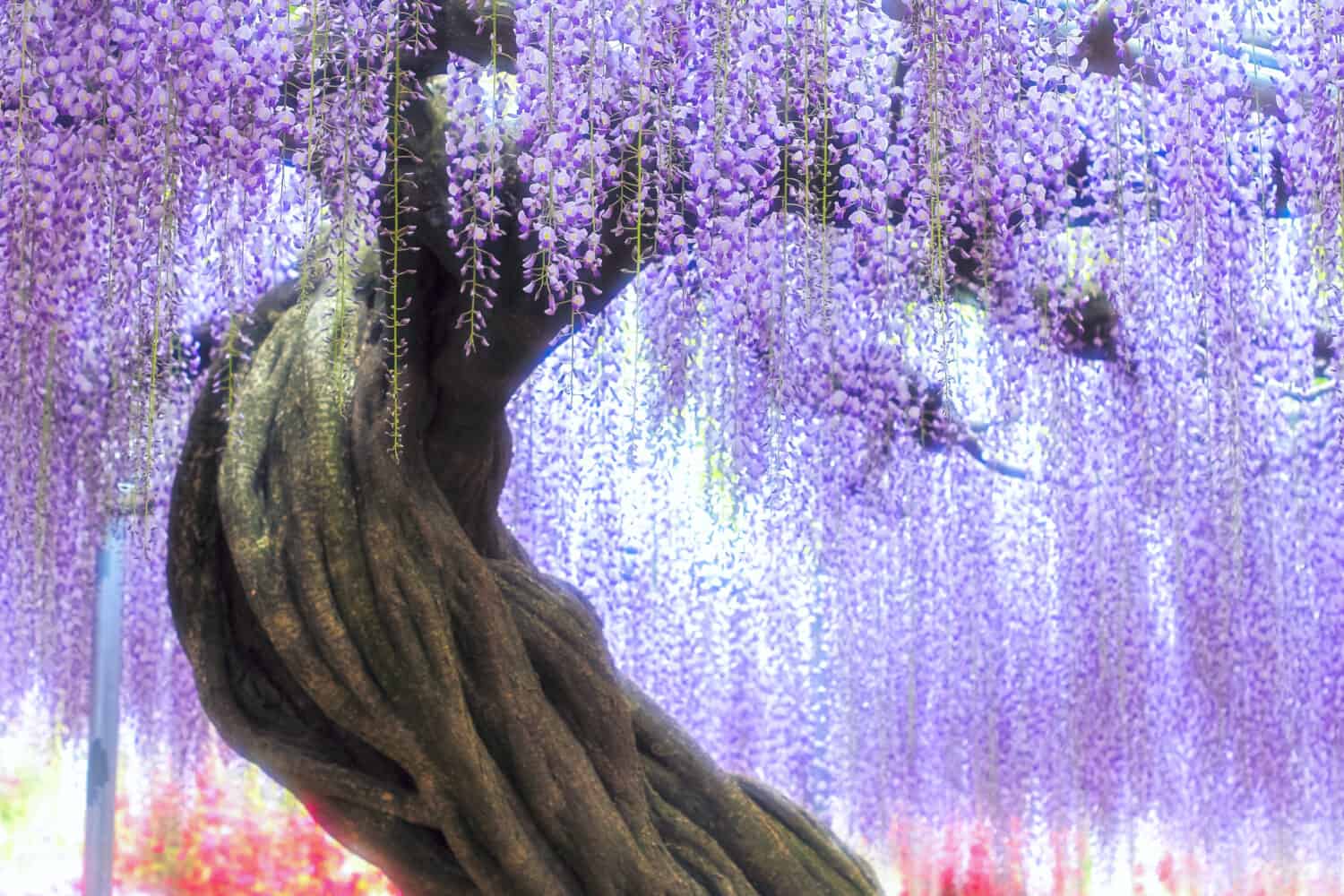
The Purple Wisteria tree has flowers that hang down, offering an interesting and beautiful scene.
©janken/Shutterstock.com
19. Purple Lily Magnolia Trees
Purple lily magnolia trees are native to Asia and smaller than other magnolias. They are botanically known as Magnolia liliiflora.
The blossoms are white on the inside but purple on the underside. You can also propagate more trees from cuttings of your Purple Lily Magnolia.
You can plant it in your yard as a hedge or plant rather than needing space for a huge tree. Expect blossoms in April or early May, adding eye-catching color to your yard. You’ll need to water them regularly until they mature and shift to only watering as needed.
Only choose the Purple Lily Magnolia tree if you live in USDA zones 5a-8b. You’ll want to plan for a height of 8-12 feet and a width of approximately the same in an area with full sun.
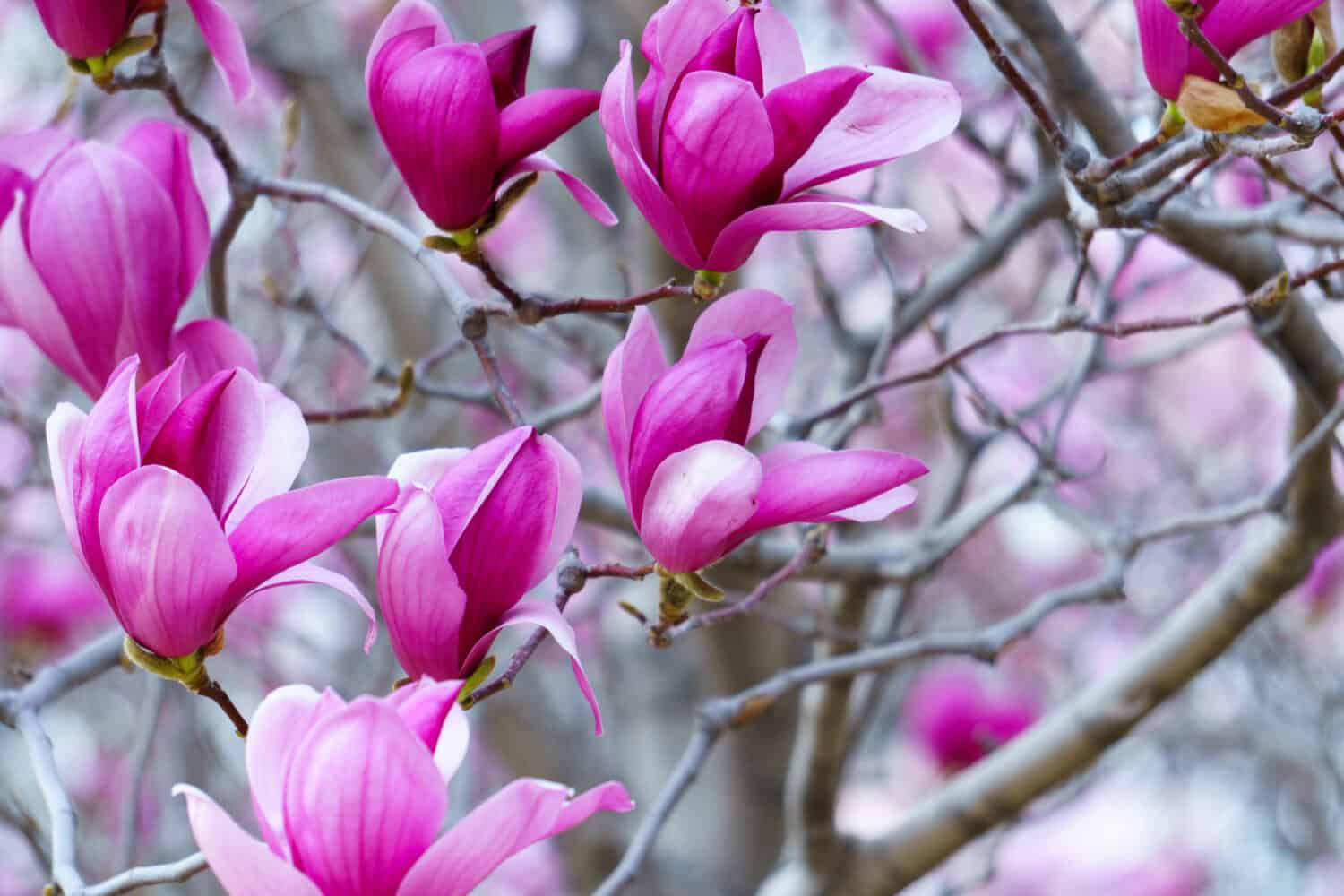
The Purple Lily Magnolia Trees produce flowers that are white on the inside but purple on the outside.
©woaibj/Shutterstock.com
20. Saucer Magnolia
Also known as Soulangeana, this tree blooms with velvety purple flowers. It doesn’t require much maintenance, but you will want to place it in an area with full sun to partial shade. The soil should be well-drained and moist, and the tree is drought intolerant.
Saucer Magnolias thrive in USDA zones 4a-9b. They can reach 15-33 feet high and 15-25 feet wide.
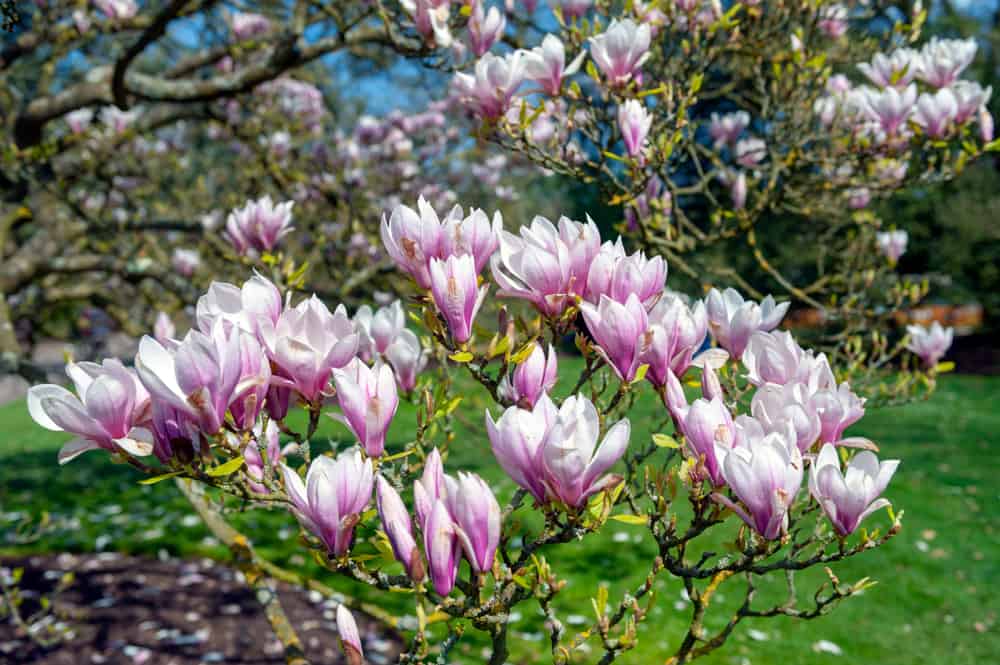
Saucer Magnolia flowers bloom in shades of white, pink, and purple.
©Gaid Kornsilapa/Shutterstock.com
21. Chaste Tree
Also known as Vitex agnus-castus, the Chaste tree is technically a shrub and boasts spikes of aromatic flowers. The flowers are typically lavender-blue and appear in late spring or early summer, then last until the end of the season. They attract wildlife like butterflies and bees and are drought-tolerant.
Chaste trees grow best in well-drained soil with fertilizer and should get planted in an area full of sun. You won’t have to water them because they prefer dry soil. In the fall, you should prune them back to one stem, and they’ll regrow quickly in the spring.
The Chaste tree grows best in USDA zones 7b-11. It only grows 10-15 feet high, making it ideal for small spaces. Its spread is 15-20 feet, so be mindful of how much space you need before planting it.
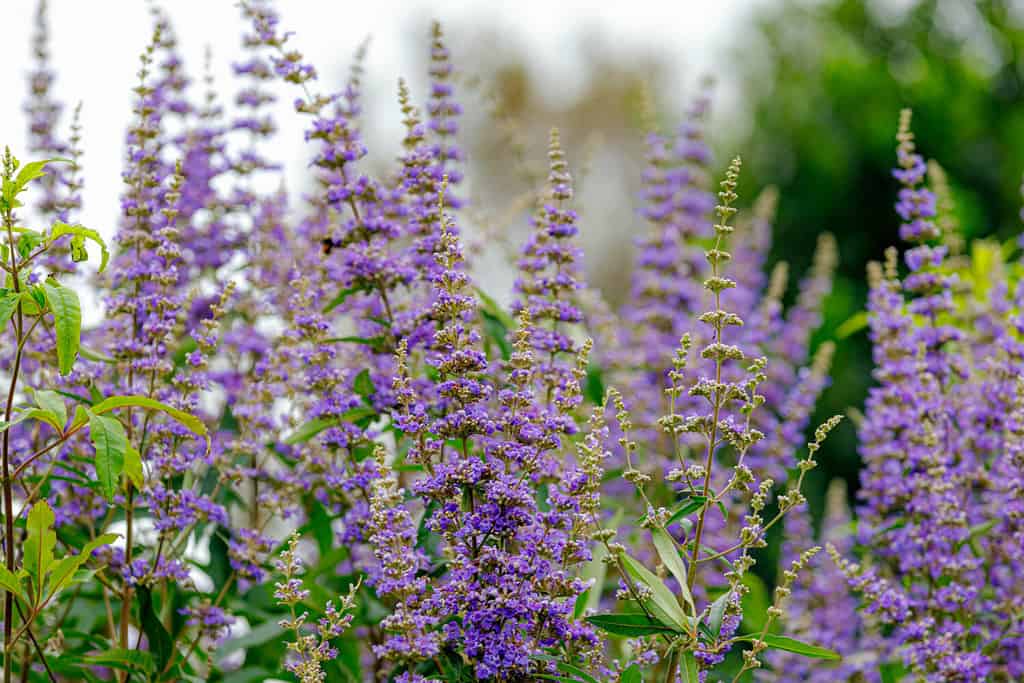
The flowers on a Chaste Tree typically last most of the season, providing continuous color.
©Wut_Moppie/Shutterstock.com
Summary of 21 Beautiful Purple Flowering Trees to Liven Up Any Yard
| Tree Name | USDA Zone | Height | Spread | Sun Exposure |
| Purple Satin Rose of Sharon | 5-9 | 8-12′ | 6-8′ | Full sun |
| Eastern Redbud | 4-9 | 20-30′ | 25’ | Full sun or partial shade |
| Jacaranda | 9b-11 | 25-50′ | 15-30′ | Full sun |
| Takasago Flowering Cherry | 4-8 | Up to 20’ | Up to 20’ | Full sun or partial shade |
| Purple Glory Dogwood | 5-9 | 15-20′ | 15-20′ | Full sun or partial shade |
| Crape Myrtle | 6-9 | 10-30′ | 6-15′ | Full sun |
| Dwarf Korean Lilac | 3-7 | 7’ | 4’ | Full sun |
| Royal Purple Smoke | 5b-8b | 11-15′ | 11-15′ | Full sun |
| Purple Leaf Plum | 5a-8b | 15-30′ | 15-25′ | Full or partial shade |
| Mountain Laurel | 4a-9b | 4-15′ | 4-8′ | Grows in any but prefers partial shade |
| Desert Willow | 7b-11 | 15-40′ | 15-25′ | Full sun |
| Purple Orchid | 9b-11 | 25-30′ | 25-35′ | Full sun |
| Royal Empress | 5-9 | 30-70′ | 3-5′ | Full sun or partial shade |
| Purple Robe Locust | 4a-8b | 30-50′ | 20-35′ | Full sun |
| Eastern Wahoo | 3a-8b | 12-25′ | 15-25′ | Full sun or partial shade |
| Silk Floss | 9b-11 | 35-50′ | 40-55′ | Full sun |
| Fragrant Lilac | 3-7 | 8-15′ | 6-12′ | Full sun or partial shade |
| Purple Wisteria | 5a-8b | 10-25′ | 4-30′ | Full sun |
| Purple Lily Magnolia | 5a-8b | 8-12′ | 8-12′ | Full sun |
| Saucer Magnolia | 4a-9b | 15-33′ | 15-25′ | Full sun or partial shade |
| Chaste Tree | 7b-11 | 10-15′ | 15-20′ | Full sun |
The photo featured at the top of this post is © zetter/iStock via Getty Images
Thank you for reading! Have some feedback for us? Contact the AZ Animals editorial team.




